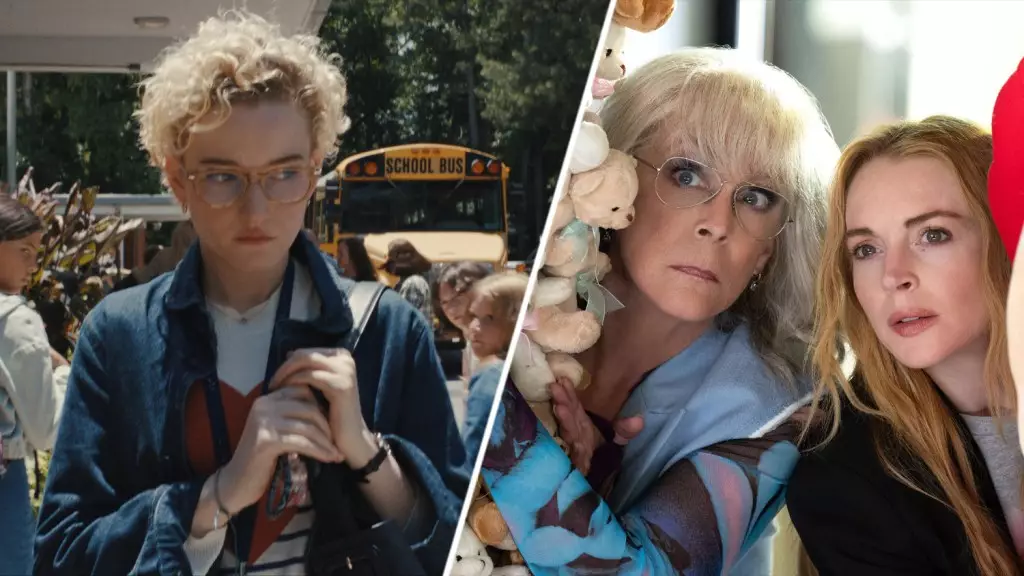This summer’s cinematic landscape is witnessing a rare and intense rivalry that could reshape perceptions of what drives audiences to theaters. On one side, we have “Weapons,” a fiercely marketed horror flick with the backing of New Line Cinema, boasting both critical acclaim and a strategic release. On the other, Disney’s star-studded remake of “Freakier Friday,” a franchise reimagined for millennial audiences, aiming to capitalize on nostalgia and familiar charm. What’s truly fascinating about this clash isn’t just the expected numbers but what it reveals about shifting viewer preferences and the industry’s blockbuster habits.
“Weapons” enters the fray armed with a sense of enigma and fresh originality. Directed by Zach Cregger, known for his inventive storytelling, it taps into the horror genre’s current renaissance—one that amplifies social anxieties, uncanny narratives, and visceral thrills. The film’s premise, involving students fleeing their homes under mysterious circumstances, offers a compelling blend of horror and mystery that has critics on Rotten Tomatoes praising its bold vision. Its early presales, especially at AMC and in IMAX theaters, suggest it’s poised for a substantial opening, potentially reaching $40 million—a significant feat given its R rating and limited daytime screenings compared to more mainstream fare.
Meanwhile, Disney’s “Freakier Friday”—a project that reteams Lindsay Lohan and Jamie Lee Curtis from the 2003 version—has its own allure. This version promises a departure from the horror genre, focusing instead on lighthearted comedy centered on identity swapping among women of different generations. It’s targeting a demographic that craves feel-good, family-friendly entertainment, especially women aged 17-34 and teenagers, which remains a lucrative segment, particularly in mid-American markets that still value PG-rated movies. With trackable interest around 40+ figures across all demographics, Disney’s strategy capitalizes on proven nostalgia, familiarity, and the appeal of a beloved franchise.
This comparative positioning—and the underlying audience data—highlights a broader cultural phenomenon: films rooted in genre innovation versus those leaning on nostalgia and family-friendly appeal. Both have their strengths, but their success may ultimately hinge on the current zeitgeist—whether viewers seek adrenaline and fresh scares or comforting familiarity.
Market Strategy and Audience Engagement
When analyzing the mechanics of the box office duel, one cannot ignore the distribution strategies. “Weapons” is boycotting traditional multiplexes in favor of IMAX and premium large-format screens, boosting its perceived value and ticket prices. With 3,200 theaters booked, including 850 premium large format (PLF) screens, the film aims to attract horror aficionados and cinephiles seeking immersive experiences. The film’s unique marketing, coupled with previews that tie into its narrative (such as the 2:17 PM show on Thursday), demonstrates an innovative approach to build buzz.
“Freakier Friday,” by contrast, relies heavily on traditional release tactics—3,975 theaters, including 150+ DBOX and motion screens—plus the power of nostalgia to drive pre-sales, which have already hit around $3 million. Disney’s marketing leverages the film’s legacy and the appeal of renewed star power. Its targeted demographic, especially women and teens, is a goldmine for opening weekends. Given its 2003 predecessor’s opening totals, the latest “Freakier Friday” could easily surpass those figures and cement itself as a weekend top performer in family-oriented markets.
The film’s release date is equally strategic: debuting close to the anniversary of the original film, it taps into cultural memory and fan enthusiasm that can elevate initial numbers. Meanwhile, “Weapons’” release timing aims to dominate characters seeking something more intense and unconventional—those who crave a visceral, unconventional experience that horror can uniquely provide in the summer blockbuster context.
Critical Reception and Audience Expectations
Critical reception further complicates the box office narrative. “Weapons” boasts a 100% fresh rating on Rotten Tomatoes, indicating that critics see it as a noteworthy piece within horror’s reinvention. Such endorsements could influence cinephiles and genre fans, translating into better word-of-mouth. On the publishing side, Cregger’s multifaceted role as writer, director, and producer suggests a unified vision that could translate into a highly original, tightly woven film—traits that cinephiles tend to reward.
Meanwhile, “Freakier Friday,” with its 79% critic score, remains more commercially dependable but less groundbreaking. Its appeal isn’t rooted in novelty but in comfort, familiarity, and a well-loved franchise structure. Audiences tend to sway toward these kinds of movies when they seek a break from more challenging or genre-bending fare. The film’s reception, reinforced by proven franchise appeal and nostalgic resonance, offers a steadiness that could translate into solid, if not record-breaking, numbers.
However, the underlying question remains: Is the audience’s appetite for originality and bold genre experimentation more potent this summer than traditional family comedies? The early indicators—positive presale numbers, strategic theater bookings, and buzz—suggest “Weapons” might have the edge, especially amongst younger, thrill-seeking demographics. Yet, Disney’s loyal base and consistent appeal shouldn’t be underestimated; the familiar can be comfort food in unpredictable times.
In sum, this rivalry exemplifies the complexity of box office economics today—where innovation, marketing, and cultural resonance intertwine to determine which film will claim the summer’s crown. While “Weapons” offers a daring, fresh narrative that appeals to genre aficionados and horror thrill-seekers, “Freakier Friday” banks on nostalgia, brand loyalty, and family-friendly appeal. Whichever film emerges victorious, it’s clear that the landscape of blockbuster filmmaking is not solely about numbers but about navigating a shifting cultural terrain where audience preferences grow more diverse and segmented by the day.

